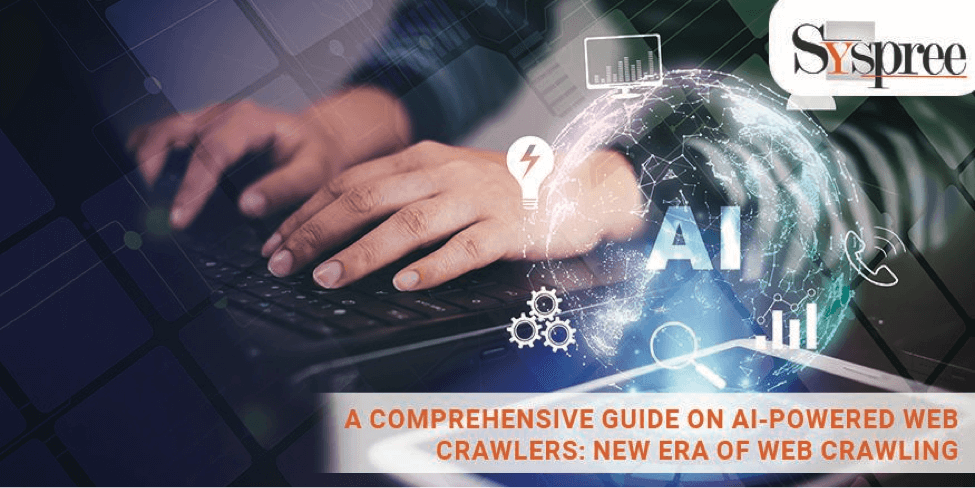AI-powered web crawlers have quickly become an essential element in digital technology’s rapid evolution, revolutionizing how data is harvested and processed across the internet. OpenAI‘s GPTBot is an exemplar in this regard – capable of traversing vast online content to extract knowledge that feeds AI features like ChatGPT. While such advancement holds great promise for improving user experiences while providing automated responses such as ChatGPT, at the same time, it poses many questions around control, indexation, content regulation, and indexing issues that need further investigation.
As AI-generated content proliferates across the internet, its authenticity and quality become paramount concerns for webmasters and content creators. They need help striking an equitable balance between taking full advantage of AI’s potential while protecting the integrity of their online presence; giving an AI web crawler access to websites opens up a debate about privacy, intellectual property protection, and the need for effective governance mechanisms.
Key Takeaways
– AI-powered web crawlers such as GPTBot are revolutionizing data acquisition on the web while simultaneously augmenting AI technologies while spurring discussions around content control and privacy issues.
– GPTBot, an AI web crawler, gathers insights from various online sources in order to enhance AI models like ChatGPT while maintaining content integrity concerns.
– Robots.txt is a tool for managing web crawler access, allowing website owners to shape interactions with AI crawlers like GPTBot and safeguard intellectual property.
– Blocking techniques such as robot iframes and data-nosnippet attributes provide ways for AI content producers to control its visibility while maintaining quality with controlled dissemination.
OpenAI’s GPTBot: A New AI-powered Web Crawler

AI-powered web crawler – Open AI’s GPTBot
OpenAI’s GPTBot is an AI-Powered web crawler. Acting as an intelligent web crawler, the bot traverses vast internet reaches in search of information that contributes to expanding capabilities of AI technologies and features of intelligence-powered technologies. Understanding GPTBot requires deeper diving into its multidimensional roles for feature enhancement and knowledge intake.
Understanding GPTBot and its Purpose
GPTBot’s primary mission is knowledge acquisition. Acting like an artificially intelligent entity, GPTBot navigates websites gathering insights, data, and content, which feed into ChatGPT models such as ChatGPT for additional enrichment. By ingestion, a wide array of online material GPTBot helps AI gain a more comprehensive knowledge base while remaining up-to-date with the latest trends, news stories, and developments across varying domains.
Role in AI Feature Enhancement and Knowledge Consumption
GPTBot plays an instrumental role in refining AI features. By immersing itself in digital spaces, it identifies patterns, nuances, and variations which could enhance AI-generated content’s quality and accuracy – in turn creating iterative learning processes which refine an AI’s language abilities to make interactions more natural, relevant, and coherent.
GPTBot raises both practical and ethical considerations when used for its intended purposes. While its web exploration contributes to AI advancement, its purpose also provokes discussions around content ownership, privacy, and control as it roams websites searching for its contents; questions arise concerning website owner rights regarding usage by external entities of content on these websites by GPTBot itself.
GPTBot User Agent and Identification: Unravelling the Digital Identity
GPTBot, like any entity on the web, must understand how they move and interact. An essential aspect of this understanding is user agents – online digital fingerprints that offer insights into who visits certain websites – GPTBot uses two user agents named token and string that reveal interesting facts about its virtual persona in this virtual realm.
Explaining GPTBot’s User Agent Token and String
The user agent token is a snippet of information that GPTBot presents when it requests access to a website. In the case of GPTBot, its user agent token is succinctly denoted as “GPTBot.” However, this brief label merely scratches the surface of the comprehensive identification process.
The user agent string, a more elaborate manifestation of GPTBot’s identity, unveils a deeper narrative. The full user agent string reads: “Mozilla/5.0 AppleWebKit/537.36 (KHTML, like Gecko; compatible; GPTBot/1.0; +https://openai.com/gptbot).” This string is a culmination of technical components that unveil GPTBot’s capabilities and intent.
A leading digital marketing agency will tell you that by encapsulating characteristics such as the browser rendering engine (AppleWebKit), compatibility flags, and version indicators, the user agent string paints a holistic picture of GPTBot’s identity.
How GPTBot Identifies itself when accessing Websites
GPTBot introduces itself digitally when approaching websites via its user agent string, acting as its digital introduction. Websites that recognize user agents can identify GPTBot’s presence and respond accordingly; this process enables websites to make informed decisions regarding whether to allow or restrict GPTBot’s access according to content policies or individual preference preferences.
GPTBot user agent token and string act as the digital equivalent of a handshake between this AI-powered web crawler and the digital domains it traverses, giving us insight into its complex inner workings – providing more clarity as to the relationship between advanced AI systems and online space.
Managing Access with Robots.txt: Navigating the Digital Crossroads

AI-powered web crawler – Managing Access with Robots.txt
Robots.txt serves an integral function within the internet ecosystem. It acts as a sentinel – protecting virtual gates from web crawlers while overseeing interactions between these digital explorers and the websites they crawl. By giving GPTBot and similar AI entities access only when necessary, Robots.txt ensures harmonious coexistence.
Importance of Robots.txt in Controlling Web Crawler Access
At its core, robots.txt acts as an official roadmap that instructs web crawlers on which parts of a website to explore versus which areas should remain off-limits for exploration. A leading web design company will tell you that this protocol is integral in maintaining an equilibrium between content dissemination and protection, allowing website owners to protect intellectual property while controlling how information spreads online.
Using Robots.txt to block GPTBot and other Crawlers
GPTBot, OpenAI’s highly capable web crawler, follows all the rules set forth by robots.txt, just like any other website crawler. Website administrators can control GPTBot’s path through various sections and grant or deny entry as desired through configuring robots.txt file configuration – either disallowing access for certain directories or permitting full access.
Disallowing or Allowing Specific Directories for GPTBot
To prevent GPTBot from accessing a website entirely, the robots.txt file can be configured as follows:
“`
User-agent: GPTBot
Disallow: /
“`
However, for those who wish to permit GPTBot access to specific areas while restricting others, a nuanced approach can be adopted:
“`
User-agent: GPTBot
Allow: /allowed-directory/
Disallow: /restricted-directory/
“`
This granular control ensures that GPTBot can glean information from designated sections while respecting the website owner’s intent. It encapsulates the spirit of collaboration between AI-driven innovation and the stewardship of digital content.
GPTBot Documentation and IP Ranges
GPTBot is an impressive innovation among AI-powered web crawlers, revolutionising information retrieval and knowledge enrichment. For businesses and developers exploring AI technologies, understanding its documentation and IP ranges becomes integral for effective integration and interaction.
Accessing the Official Documentation for GPTBot

AI-powered web crawler – Accessing the Official Documentation for GPTBot
OpenAI, the engine behind GPTBot, offers comprehensive yet user-friendly documentation as a compass to those eager to harness its abilities. The documentation details the intricacies of its functionalities, capabilities, and integration methods. It provides insight into initiating interactions, exploring features of interest, or harvesting knowledge from vast amounts of online content.
GPTBot documentation not only equips developers with the technical know-how needed to integrate GPTBot seamlessly but also gives an in-depth knowledge of its potential applications and benefits. Whether you are an established developer or exploring AI technologies for the first time, this documentation offers a structured path towards optimising all benefits GPTBot offers.
OpenAI’s Published IP Ranges for GPTBot
GPTBot traverses the digital landscape from specific IP addresses provided by OpenAI, serving as digital gateways through which GPTBot interacts with its online environment. Awareness of this IP range holds great significance for businesses and organisations – as these addresses serve as essential gateways through communication between GPTBot and its environment.
GPTBot IP range recognition is pivotal in assuring security and authenticity for interactions between websites and platforms and the GPTBot web crawler, further increasing overall security. By filtering incoming requests through these established IP ranges, websites, and platforms can verify whether an unapproved web crawler exists and increase overall cyber-security.
John Mueller’s Advice on AI Chatbot Content Indexing Management
John Mueller offers website owners guidance when faced with AI-generated content entering the digital sphere. According to Mueller’s advice, he acknowledges the rise of chatbots as potential search engine disruptors; their presence can have serious ramifications on identity in search engines’ eyes. To retain autonomy over AI chatbots, specific measures need to be implemented by webmasters themselves to secure its visibility within search results pages.
Explore Strategies to Prevent Googlebot from Indexing Certain Content
Mueller recommends several strategies for stopping Googlebot from indexing AI created content: by employing “robotted iframes,” effectively creating digital barriers around it that notify Googlebot not to index it; or use a “robotted JavaScript file/resource,” restricting Googlebot from indexing it; as well as restrict visibility using data-nosnippet attributes.
Mueller’s advice resonates beyond being simply technical; it affirms website owners’ independence in creating their narrative online. Furthermore, this advice underscores the significance of decisions regarding content quality and relevancy, encouraging careful deliberation before permitting Googlebot to index it.
Implementing Blocking Techniques: Mastering Control Over Content Visibility
With AI-driven technologies, sweeping across digital spaces, content visibility becomes ever more vital. To meet this growing need for control over content visibility and indexation/dissemination techniques for AI-generated pieces. In this guide we outline three effective blocking techniques which enable website owners to manage how their digital creations are displayed online.
Using Robotted iframes for Blocking: A Step-by-Step Approach
Robotted iframes offer an effective method for hiding content from search engine crawlers. They are, therefore, often employed to prevent search engine robots from accessing specific areas on a webpage. To implement this strategy:
- Recognize Content Generated by AI: To remove certain AI content from indexation, identify which pages need blocking from being indexable.
- Create an iframe: Construct an iframe element around the content you need to control, such as images.
- Include the “Robotted ” Attribute: Use an iframe tag with a “Robotted” attribute to signal search engine crawlers that the content on it should not be indexable by indexers.
Utilizing Robotted JavaScript Files/Resources
By employing robotted JavaScript files or resources, leveraging robotted files provides an efficient means of preventing the indexation of specific content. Please follow these steps:
- Locate the JavaScript Files/Resources: Locate all relevant javaScript files or resources associated with AI content you intend to manage.
- Modify the Robots Meta Tag: For SEO reasons, a leading SEO company in Mumbai suggests adding a “meta” tag with “robots: noindex” as its directive to tell search engines to prevent indexation of this file or resource. This way, they won’t index anything.
Implementing the Data-Nosnippet Attribute to Block Content in Snippets
The data-nosnippet attribute empowers webmasters to manage how snippets of their content appear in search engine results:
- Add Attributes: Within each HTML tag containing content of interest, add “data-nosnippet”.
- Set Snippet Appearance: Use custom attributes to define how your content’s snippet will appear in search results and ensure it matches up with your goals.
Balancing Content Quality and Discovery: Navigating the Nexus
AI-powered content creation presents us with a crucial challenge: How can we strike a balance between content quality and its discovery by search engines? At the intersection of technological progress and content curation lies nuanced decision-making that considers potential AI content production and human judgement.
Assess AI-Generated Content for Indexing

AI-powered web crawler – Assess AI-Generated Content for Indexing
Central to this conundrum lies content quality. AI content offers rapid production in large volumes; however, quality can vary substantially – webmasters must act as custodians of digital domains to ensure content meets established standards of accuracy, relevance, and engagement before indexing it by search engines. An informed approach must take precedence over blind indexing by search engines.
Making Informed Decisions about Content Discovery by Search Engines
Locating content using search engines requires taking an integrated approach. Webmasters must first examine whether AI-generated material meets established web standards of accuracy and coherence before considering its possible impact on the credibility of a website. Content that upholds the website value proposition may be suitable for indexation, while material that falls short should either require refinement or be eliminated from search engine visibility.
Second, understanding user intent is of critical importance. Content generated by AI should meet user expectations and offer genuine value, with understanding user interactions being key when making decisions regarding visibility in search results and whether such material should appear or not. Content that meets users needs or preferences more likely enhances overall website user experiences than otherwise generated content.
Webmasters can employ various strategies to influence search engine indexing. Tools like the “data-nosnippet” attribute allow webmasters to customise search snippet representation so that content generated by AI aligns with their website’s desired narrative.
Conclusion
AI-powered web crawlers like the GPTBot presents new challenges regarding information acquisition, necessitating an equilibrium between content quality and search engine visibility. GPTBot’s role as an AI feature enhancer highlights responsible content curation practices; understanding its user agent as per John Mueller’s advice can empower webmasters to shape online narratives more freely than before while blocking techniques harmonize AI capabilities with human intent, creating a harmonious digital landscape. If you like this blog check out our previous blog on 33rd Week Roundup: Instagram Introduces Multi-Advertiser Format, NYC Bans TikTok, and more!








OpenAI’s GPTBot marks a pivotal step forward in the journey of AI evolution. So its a better new challenges regarding information acquisition, necessitating an equilibrium between content quality and search engine visibility
Absolutely, you’ve hit the nail on the head! OpenAI’s GPTBot undeniably represents a significant leap in the ongoing evolution of AI technology. It opens up new horizons and brings about fresh challenges that we must navigate skillfully.We are pleased to know you found the blog informative
Very informative blog about Web Crawling. Liked this blog a lot. Thank you for sharing.
Hello Pranali, we are glad to know you found the blog useful. Do check out our website for updates on the Digital Marketing industry
Very comprehensive and insightful blog with an exploration of the evolving role of AI-powered web crawlers like GPTBot.
Hello Aditi, we are pleased to know you found the blog insightful
Very informative
This blog adeptly encapsulates the dynamic interplay between AI-driven web crawlers, content control strategies, and the broader ethical considerations data acquisition and dissemination in the digital age. It creates a thought-provoking piece that underscores the need for responsible AI development and content management practices.
Thank you for recognizing the depth and significance of our blog! We’re thrilled to hear that you found it adeptly capturing the intricate relationship between AI-driven web crawlers, content control strategies, and the ethical dimensions of data acquisition and dissemination in our digital era.
Very informative blog… enjoyed reading it
This blog post provides an insightful and comprehensive look into the world of AI-powered web crawlers, with a particular focus on OpenAI’s GPTBot. The discussion surrounding the balance between data acquisition, content control, and privacy concerns is particularly thought-provoking. It’s fascinating to see how GPTBot contributes to refining AI features and enhancing knowledge bases while also raising ethical questions about content ownership and website access.
Overall, this post is a valuable resource for anyone interested in the intersection of AI, web crawling, and content control. It masterfully covers a wide range of topics while providing clear explanations and practical implications. Kudos to the author for breaking down complex concepts in a accessible and informative manner.
Open AI’s GPT Bot is Very informative blog about Web Crawling. I Liked this blog a lot. Thank you for sharing.
Thank you so much for your kind words and positive feedback about our blog. We’re thrilled to hear that you found the information helpful and engaging.
The blog gives useful information about AI web crawlers like GPT Bot, how they gather data, and the problems they raise for controlling content and privacy. The tips on controlling access and making content good are helpful for people into AI and online stuff. Thanks for sharing this insightful content.
Thank you so much for taking the time to read our blog post and leaving such a thoughtful comment! We’re delighted to hear that you found our insights into AI web crawlers, particularly GPT Bot, to be valuable and informative.